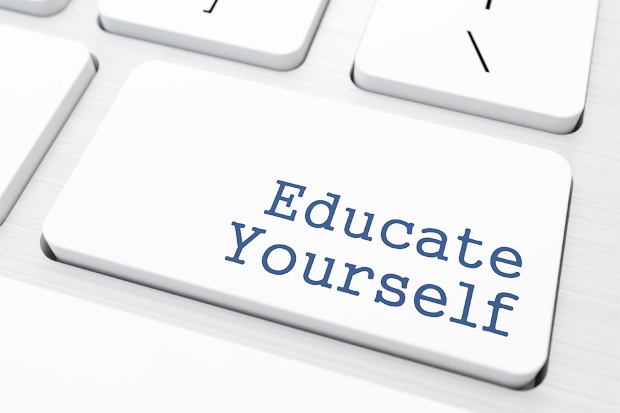Education, Evolution & AI – Mixing Technology and Learning in the 21st Century

by Ricardo E. Bianchi August 29, 2024
There are certain “tasks” in the life of a human being that are taken for granted, although not necessarily for the entire population. One of them is education. For those of us who have had the opportunity of an education from nursery to postgraduate or doctorate degrees, it has not had an impact on us, however, there is a good percentage of our population that does not have access to it for a thousand reasons, which we will not go into in depth in this review.
Now, we must add to the recipe that in recent years, technology has profoundly transformed the way we live, work, and learn. The rapid evolution of digital tools and the appearance of artificial intelligence (AI) have brought about significant changes in various sectors, with education being one of the most impacted. This review explores the evolution of education in the digital age, the integration of AI, and the challenges and opportunities that lie ahead.
The evolution of technology in education
In recent years we have quietly or inadvertently witnessed an unprecedented wave of technological advances. Smartphones and wearables, tablets and laptops have become extended, making information accessible at our fingertips, with the internet coming to “democratize knowledge”, allowing anyone with a connection to learn practically anything.
This technological revolution has not left the education sector indifferent, leading to the emergence of new teaching methodologies and learning environments.
One of the changes, to mention one of them, has been the adoption of the inverted classroom model. This approach reverses traditional teaching methods by offering online educational content outside of class and moving homework into the classroom, allowing for more interactive and hands-on learning experiences, inviting to deeper understanding and engagement among students.
Technology is also now present in all areas of education, from administrative tasks to classroom teaching. Digital tools such as interactive whiteboards, learning management systems, gamification and educational software have become an integral part of modern education, enhancing teaching and learning processes. These and other tools enable personalized learning, where educational experiences are tailored to the needs, pace and learning styles of each learner.
If we study a little further the subject of pedagogy or andragogy, we must understand that not all students have the same strengths, nor the same weaknesses, so an ally is the technology that comes to facilitate the teaching to the teacher and thus be able to adapt even a learning plan for each student. At this time, we must not forget that the different educational institutions must meet the requirements and guidelines of the educational entities in each country, however we are not making an override, but rather improving the learning ability of each student.
The rise of artificial intelligence in education
Artificial Intelligence has become a powerful tool for education, offering a host of benefits to students and teachers alike. AI-based applications and platforms can provide personalized learning experiences, adapt to students’ progress, and offer real-time feedback. These capabilities help identify learning gaps, suggest targeted interventions and ensure that no learner is left behind.
For teachers, AI can help in administrative tasks, such as grading and attendance tracking, allowing them to focus more on teaching and interacting with students. AI-based analytics can also provide insights into student performance, helping educators tailor their teaching strategies to meet diverse learning needs.
Likewise, we can mention the incorporation of data, with which we can work on prediction, and even take it a step further, up to the realm of sentiment reading, without discussing for now what is data governance and privacy.
In addition, AI can facilitate collaborative learning by connecting students from different locations, fostering a global classroom environment. AI-powered language translation tools can break down language barriers, allowing students from diverse backgrounds to learn together and from each other.
Addressing fears of AI replacing human educators
Having spoken of its many advantages, the rise of AI in education has also raised concerns about the potential replacement of human teachers with robots. However, it is imperative to understand that AI is not a replacement for human educators, but rather a complement, an ally and an auxiliary. The human touch, empathy and the ability to inspire and motivate students are qualities that AI cannot replicate.
Teachers play a crucial role in fostering critical thinking, creativity and emotional intelligence, which are essential skills for the 21st century. AI can help by performing routine tasks and providing data-driven information, but the human element remains irreplaceable in education. Embracing AI as a tool and not as a threat can improve the teaching profession, making it more efficient and impactful.
I wanted to emphasize this since, due to ignorance, many people have come to think that we are on the edge that machines, computers and even robots can displace us in a short time.
Bridging the generation and community gap
Integrating technology and AI into education has also highlighted the differences that exist between different generations and communities. While younger generations can easily adapt to new technologies, older generations may struggle with the transition. Similarly, disparities in access to technology exist between urban and rural areas, and between affluent and underserved communities.
In order to fix these challenges, governments, educational institutions and the private sector must join forces. Providing access to affordable technology, investing in digital literacy programs, and fostering a culture of continuous learning are essential steps to bridging these gaps. With the right support and resources, the benefits of technological advances in education can be more equitably distributed.
My conclusion
The evolution of education in the digital age, driven by technological advances and artificial intelligence, presents a promising future for both learners and educators. The integration of AI in education offers opportunities for personalized learning, improved teaching practices, and global collaboration. However, it is crucial to address generational and community gaps to ensure that these benefits are accessible to all.
As a personal comment, I encourage my university students to use ai tools for their studies, but one of the conditions I propose is to know how to analyze, interpret and understand the results and not just copy-paste the information obtained.
As we walk through these changes, it is crucial to embrace technology as a tool that complements human educators, not replaces them. By fostering a collaborative approach and addressing existing disparities, we can create an inclusive and effective educational landscape that prepares students for the challenges and opportunities of the 21st century.
The synergy between technology experts and educators holds the key to unlocking new possibilities. Technologits… your innovations in AI and educational tools have the power to revolutionze learning, while educators, your passion and expertise shape the minds of future generations.
Together, we can create magic by combining cutting-edge technology with pedagogical excellence, transforming education into a dynamic, personalized, and deeply human experience.
Ricardo E. Bianchi
ricardo.e.bianchi@gmail.com
www.linkedin.com/in/ricardoebianchi/
articlebiz.com







No Comment